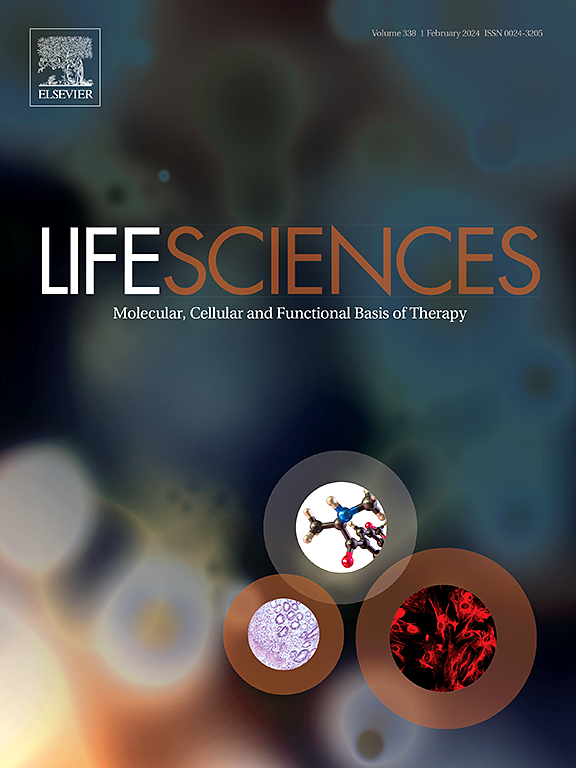A retrospective cohort analysis of factors influencing continuous antibiotic therapy with ampicillin
IF 5.1
2区 医学
Q1 MEDICINE, RESEARCH & EXPERIMENTAL
引用次数: 0
Abstract
Aims
There are limited data on ampicillin/sulbactam, both for continuous infusion and for use in critically ill patients. We aimed to identify factors that help predict ampicillin plasma levels during continuous antibiotic therapy in intensive care patients.
Main methods
We retrospectively reviewed and retrieved a large dataset of patients who received continuous ampicillin infusion with therapeutic drug monitoring between 2015 and 2022. Patients initially received standard dosing (single shot of 2/1 g followed by continuous infusion of 6/3 g ampicillin/sulbactam per day), which was then adjusted based on the results of regular therapeutic drug monitoring and according to a target range of 30–60 mg/l (equivalent to four to eight times the minimum inhibitory concentration of ampicillin for Enterobacterales).
Main results
466 measurements from 225 patients (152 male, mean age 61 years) were analyzed. Initial measurements of ampicillin plasma levels were below the predefined optimal therapeutic range in 50 %, within the range in 30 % and above the range in 20 %. Target attainment increased to 70 % by the 4th measurement. There was a significant negative correlation between ampicillin plasma levels and estimated glomerular filtration rate (eGFR) (r = −0.74; p < 0.001) and, to a lesser extent, with height (r = −0.31; p < 0.001). Based on multiple linear regression, eGFR and body weight or height were the factors accounting for 63 % of the variability in the data.
Significance
To optimise target achievement, ampicillin dosing in critically ill patients requires a personalized approach based on renal function. Importantly, patients with normal or augmented eGFR require higher standard doses of ampicillin/sulbactam.
对氨苄西林持续抗生素治疗影响因素的回顾性队列分析。
目的:有关氨苄西林/舒巴坦持续输注和用于重症患者的数据有限。我们旨在找出有助于预测重症监护患者在连续抗生素治疗期间氨苄西林血浆水平的因素:我们回顾性地回顾并检索了2015年至2022年间接受氨苄西林持续输注并接受治疗药物监测的患者的大型数据集。患者最初接受的是标准剂量(单次注射 2/1 克,然后每天持续输注 6/3 克氨苄西林/舒巴坦),然后根据定期治疗药物监测的结果和 30-60 毫克/升的目标范围(相当于氨苄西林对肠杆菌最小抑菌浓度的 4 至 8 倍)进行调整:分析了 225 名患者(152 名男性,平均年龄 61 岁)的 466 次测量结果。最初测量的氨苄西林血浆水平低于预定最佳治疗范围的占 50%,在范围内的占 30%,高于范围的占 20%。在第 4 次测量时,达到目标的比例上升到 70%。氨苄西林血浆水平与肾小球滤过率(eGFR)呈明显负相关(r = -0.74;p):为了优化目标的实现,重症患者的氨苄西林用药需要根据肾功能采取个性化的方法。重要的是,eGFR 正常或增高的患者需要更高标准剂量的氨苄西林/舒巴坦。
本文章由计算机程序翻译,如有差异,请以英文原文为准。
求助全文
约1分钟内获得全文
求助全文
来源期刊

Life sciences
医学-药学
CiteScore
12.20
自引率
1.60%
发文量
841
审稿时长
6 months
期刊介绍:
Life Sciences is an international journal publishing articles that emphasize the molecular, cellular, and functional basis of therapy. The journal emphasizes the understanding of mechanism that is relevant to all aspects of human disease and translation to patients. All articles are rigorously reviewed.
The Journal favors publication of full-length papers where modern scientific technologies are used to explain molecular, cellular and physiological mechanisms. Articles that merely report observations are rarely accepted. Recommendations from the Declaration of Helsinki or NIH guidelines for care and use of laboratory animals must be adhered to. Articles should be written at a level accessible to readers who are non-specialists in the topic of the article themselves, but who are interested in the research. The Journal welcomes reviews on topics of wide interest to investigators in the life sciences. We particularly encourage submission of brief, focused reviews containing high-quality artwork and require the use of mechanistic summary diagrams.
 求助内容:
求助内容: 应助结果提醒方式:
应助结果提醒方式:


